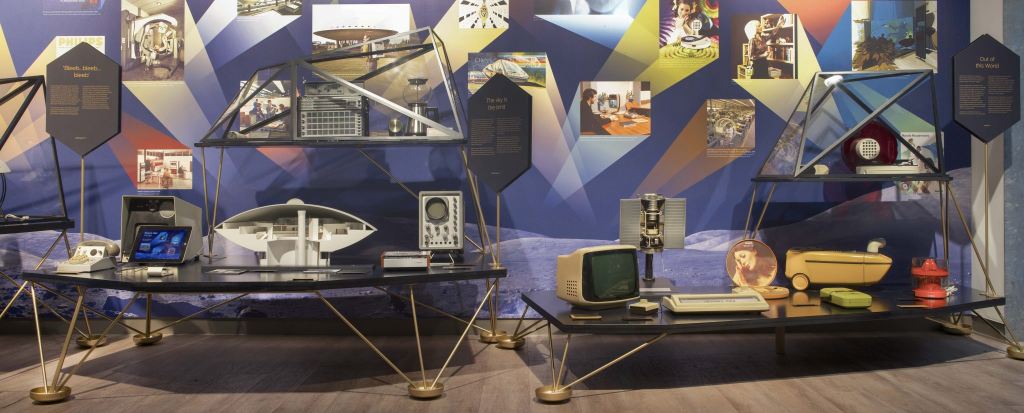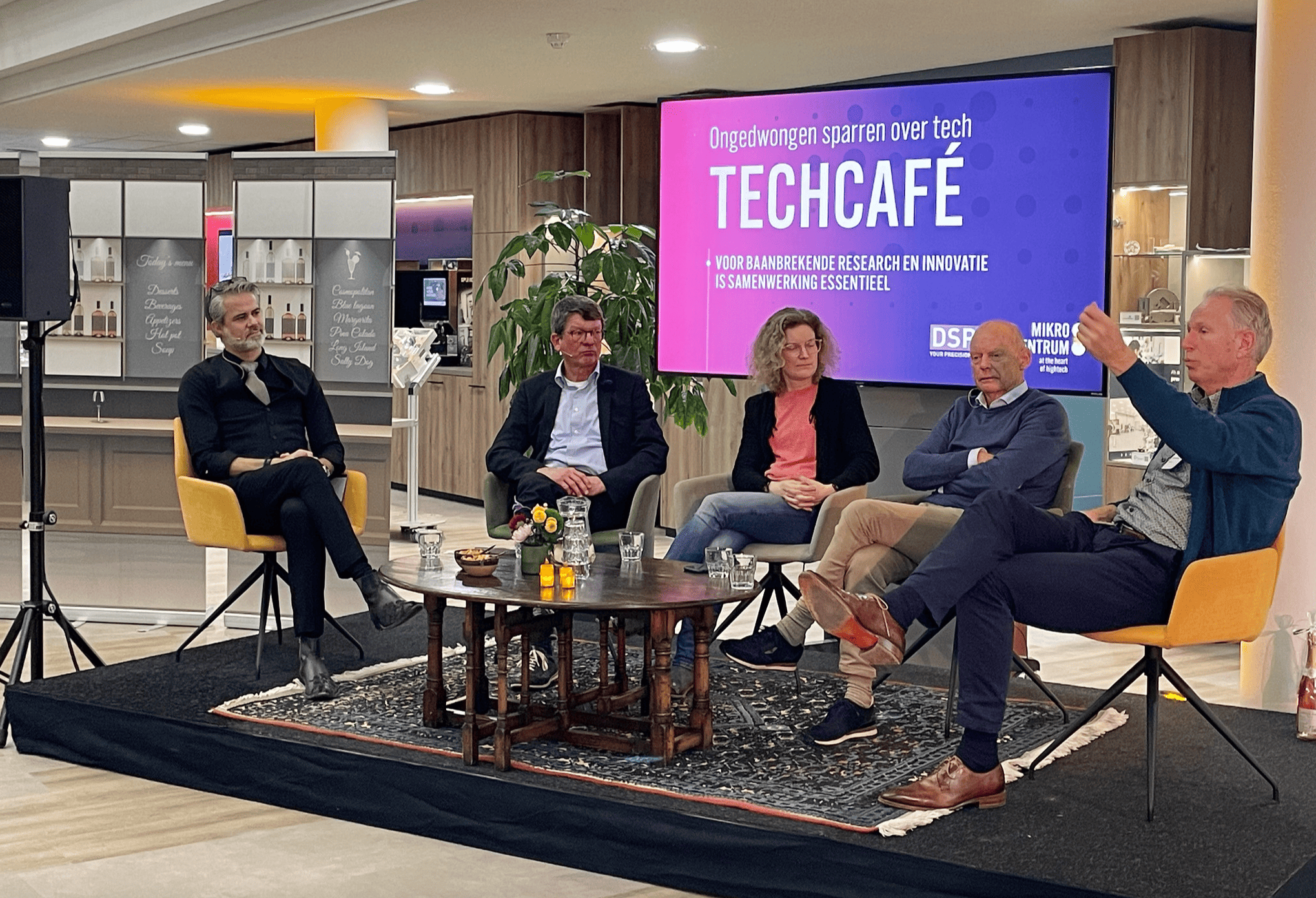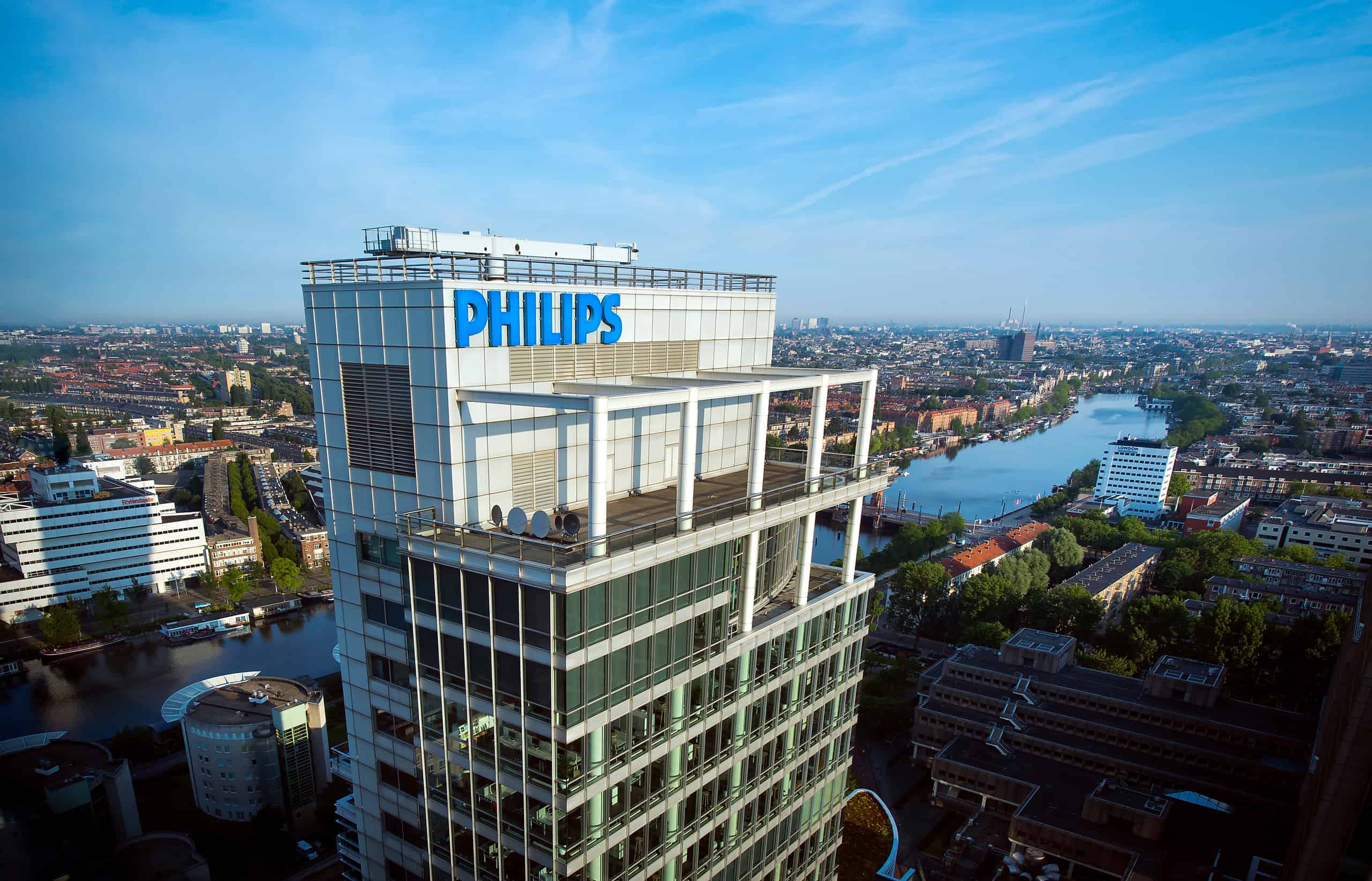
“Only few people know that Philips designed the first Dutch satellite in 1969.” Sergio Derks is speaking intensively in front of one of the display cabinets. He is the curator of the Philipsmuseum on the Emmasingel and he has composed the expo Space Age Design at the museum. “It was a collaboration between Fokker and Philips, Philips delivered all electronic components for the satellite. In 1974 it was finally sent into space.”
“It was a special time, socially as well as in terms of technological developments. In 1969, when I was a little boy, my father took me out of bed when Armstrong landed on the moon. The majority of the older people among us will probably remember what they were doing at that moment.” The exposition is, according to Derks, composed to introduce the stories from that time to the younger generations. “Because aerospace has been a great inspirer for the design of consumer goods.”
“That starts in the late 50s, Russia sends the Sputnik 1 into space and later in 1961 Yuri Gagarin is the first man in space. The western world, especially America, wants to keep up and invests a lot in aerospace. At the same time the wealth of the people is increasing, more and more products are becoming widely available for everyone.” Derks is pointing at a small sized transistor radio. “Many buttons and sliders, it looks very technical and complicated. That was typical for that time. In the late 50s, people were very optimistic about the technical progress, anything was possible. Youth culture arrived, the youth could now choose what music they wanted to listen to thanks to the invention of the cassette.” Derks is taking you through time and via several products and stories he ends up at the “moonshaver” from 1969. The story goes that the shaver is specifically designed for astronauts, with a built in hair hoover so that the beard hairs wouldn’t float around in space. Revolutionary for that time, says Derks. “but I don’t think that such a device has ever really been in space, it’s way too heavy.”
Also in the ’70s, confidence in technology was as great as ever. “The thought at Philips was that they could solve world problems with it. The Evoluon was a do-museum for technical progress at the time. It looked very futuristic and visitors could be introduced to the inventions of the future.” Derks gives the example of the first videophone, an old fashioned phone with an associated screen. “Now you would use your smartphone, that was unimaginable at the time.” Philips keeps thinking ahead and they’re thinking of all sorts op applications for the future together with a team led by Syd Mead, an American futurist, designer and illustrator. Derks is pointing to several posters from 1970 that are hanging on the wall. “At the time they were already talking about a 3D colour television and learning from a distance, where every student is looking at his own screen. I find that very special.”
According to the curator there are similarities between now and then: “Now we’re also pushing limits, everything has to be smaller, faster and with more capacities. It was like that before as well. The moon then, is now Mars. We’re even already talking about Mars colonies. That is what makes this exhibition so interesting, I think the youth will also recognize that comparison.”
The crown piece of the exhibition isn’t physically present, only on a poster. Derks: “A space-like television with a built in lamp from 1970. This copy was never marketed, so there are only a couple of prototypes. Very rare. Through our Philips networks we are still searching. I hope it will show up one day, that would be fantastic”, he laughs: “so if somebody happens to have it in their attic, please report to us.”
Finally: not only designers were inspired by aerospace, musicians were too. Dick Raaijmakers who was experimenting on the electro-acoustic field at the old Natlab, composed the piece ‘song of the second moon’ in 1957, based on the beeps of the first Russian satellite. Kid Baltan, as Raaijmakers called himself, in fact was one of the originators of electronic music.











